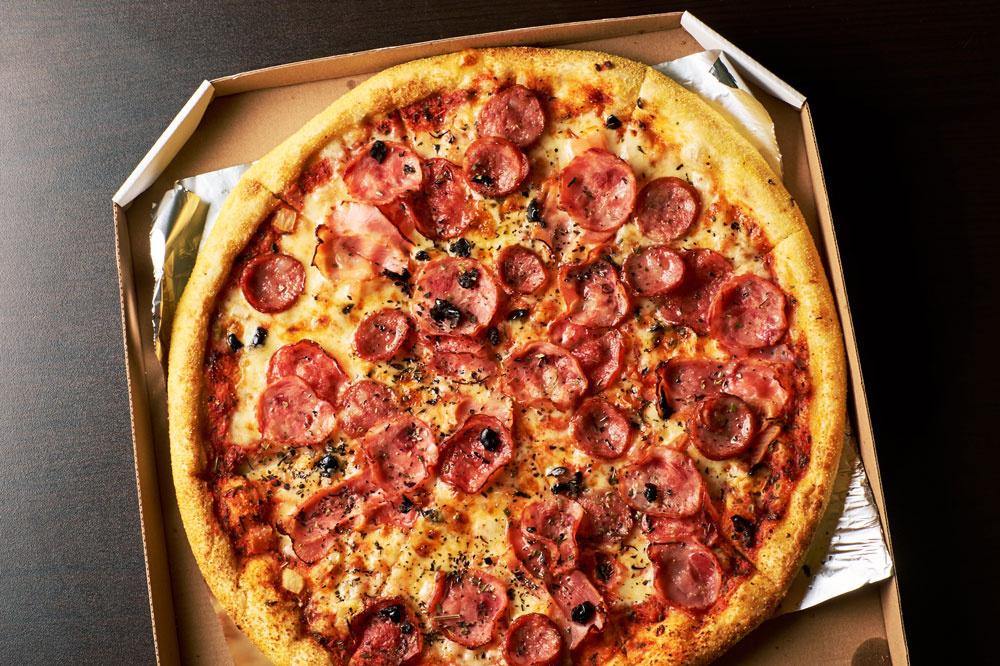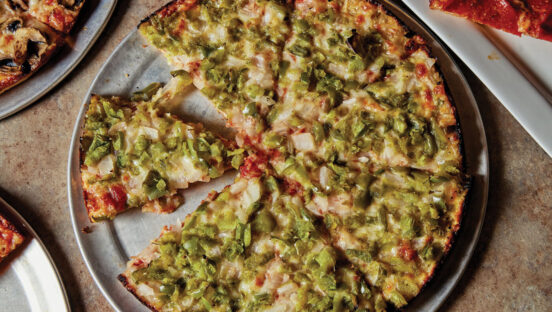Looking for ideas to improve your carryout pizza? Keep in mind that some pizzas are better suited for carryout than others. As a rough guide, those that are baked at high temperatures (above 750°F) are generally less well-suited for carryout. Those pizzas that are baked at a lower temperature (450°F to 600°F)—and essentially all pizzas baked in any type of air impingement oven—will be better suited for carryout. By no means does this imply that pizzas baked at high temperatures are not suitable for carryout—they’re just not as well-suited and may require special handling by the consumer once they get their pizza home.
Reheating any DELCO (delivery/carryout) pizza will do wonders to improve its quality. This step could be the salvation of a high-bake-temperature carryout pizza, because it helps to re-crisp the crust and dry the top of the pizza. So make sure to educate your customers by including an instructional note with each pizza that reads something like this: “For maximum enjoyment, remove pizza from packaging and place into a 300°F oven for X minutes before serving.”
To make reheating the pizza easier for your customers, place the pizza on a square piece of ovenable parchment paper laid out in your pizza box. This will allow for easy transfer of the pizza either directly into the oven or onto a pizza pan or cookie sheet for reheating.
Above all, you want to offer a drier pizza for carryout. Air impingement ovens are champs at removing moisture from a pizza, but to provide the necessary throughput, they are sometimes pushed too hard when it comes to baking time. If at all possible, slow your oven down—even 15 seconds can make a significant difference—and lower the baking temperature slightly if you need to.
More tips: If you work with a deck or stone hearth oven, you might want to try baking your carryout pizzas for the first couple of minutes on a seasoned screen or an anodized disk. This may allow you to bake them a little longer without changing the oven temperature. Also consider placing the baked pizza on a screen or rack to let it steam off for 30 to 60 seconds before cutting and boxing. Finally, think about using a box insert designed to hold the pizza off the bottom of the box or cardboard circle. The insert will help protect the flavor of the crust while reducing its tendency to get soggy after being boxed/packaged.
Do you hold your slices in a heated cabinet? If so, when a customer buys a slice, it’s a good idea to reheat it to crisp the bottom nicely. In fact, try adding a little extra cheese to the slice at the time of reheating and increase the reheat time to ensure the added cheese is thoroughly melted and that the bottom crust develops a nice crispness to it. That will result in a pretty good slice that’s ready for the customer to enjoy at home. And, as mentioned earlier, be sure to bundle your slices with a drink if possible.
The late Tom “The Dough Doctor” Lehmann was a longtime columnist for PMQ and served as director of bakery assistance for the American Institute of Baking. This article originally appeared in the May 2020 issue of PMQ.















